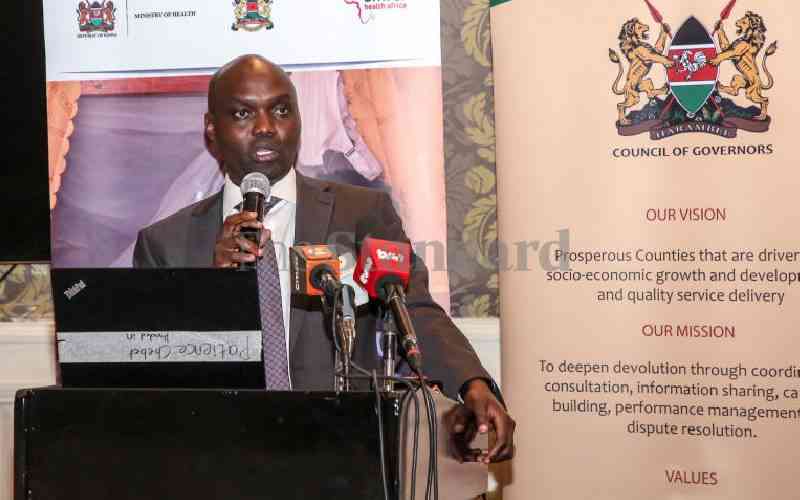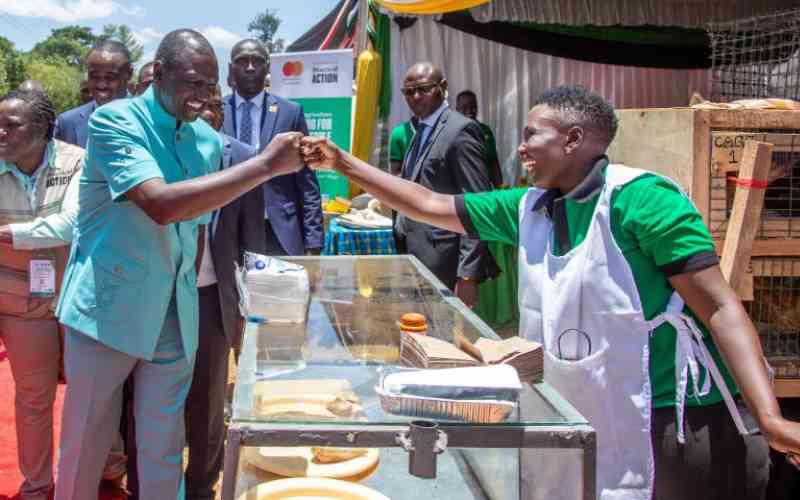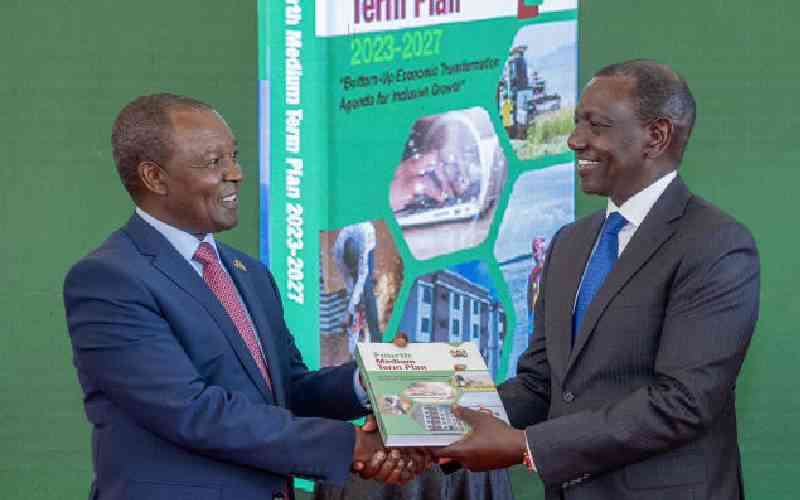Expansive multi-purpose dams spread across the country but whose works have stalled are part of the big projects gobbling up government revenues and plunging the country into debt.
From Marsabit, Wajir, Makueni, Machakos, Kitui, Laikipia, Nyeri, Kirinyaga to Kiambu, the government has commissioned mega dams to alleviate water shortages.
The cumulative cost of the projects run into tens of billions of shillings. The flagship Thiba Dam in Kirinyaga will cost Sh20 billion when completed. Others are Naromoru and Karemenu in Kieni constituency, Nyeri County, which will cost Sh13 billion, Badassa Dam (Sh2 billion), Kahurura and Wiyumiririe dams in Laikipia County (Sh9 billion) and Bute Dam in Wajir (Sh9 billion).
A number of the reservoiurs were the brainchild of former President Mwai Kibaki’s government but are only just being implemented now or were never completed.
Most were part of the Vision 2030 blueprint which initiated about 22 medium to large dams to reinvigorate farming and alleviate water shortage in arid and semi arid counties.
In Western, dams worth approximately Sh140 billion are in various stages of either conceptualisation or implementation.
The Exchequer is studying proposals by the Lake Basin Development Authority (LBDA) to build the Nandi Forest dam at a cost of more than Sh40 billion and the Koru-Soin dam at Sh100 billion.
This follows completion of feasibility studies into the two which have a combined potential to plug into the national electricity grid additional 180 megawatts of power and stabilise the region’s supply.
LBDA Managing Director Evans Atera says the government has stepped up efforts towards materialising the dams as part of the Big Four agenda. “It is worth noting that the acreage of land potentially brought under irrigation in this project will go a long way in boosting food security and establishment of food processing industries. Additionally, thousands of job opportunities lie in wait for those employed in courtesy of the project,” he said.
The projects have sunk millions in feasibility studies and designs and will be funded by international donors, the Treasury and county government through Private Public Partnerships.
The Magwagwa dam, with a reservoir sitting on 18 square kilometres of land, will have capacity to store 445 million cubic metres of water to generate 120MW hydroelectric power and irrigate more than 13,000 hectares.
The Sondu Muriu river project will supply nearly 10,000 households with piped water. Farms, mostly under sugarcane and rice, in Ahero, Nyakach, Muhoroni and parts of Sotik will be irrigated in the kickoff.
Badasa Dam in Kirinyaga was started in 2009, but no considerable progress has been made. The dam stalled after about Sh2 billion was sunk into the project and the contractor and government have been in and out of court ever since.
The dam has a capacity of 3.3 million cubic metres. It has a 52-metre embankment and will depend on rain water to fill.
In their campaigns last year, President Uhuru Kenyatta and his Deputy William Ruto promised more funds to revive the project and swore to arrest the engineer found culpable of embezzlement of the dam’s funds.
Stay informed. Subscribe to our newsletter
In Kirinyaga, construction of Thiba Dam has already taken off at Rukenya, exciting rice farmers who were limited to planting the crop for one season due to water shortages. Once complete, the reservoir will be 40 metres tall and a kilometre long and will hold 15 million cubic metres of water from River Nyamindi.
Thiba Dam is being constructed with funding sourced from the Japanese government and is one of the projects envisioned by Kibaki being implemented by the current administration. The government still owes Sh2.3 billion to residents who owned land on where the project sits.
In Nyeri, Karemenu Dam is expected to have a water storage capacity of 4 million cubic metres and to irrigate about 1,000 hectares. Naromoru Dam will have a storage capacity of 10.5 million cubic metres and an irrigation command of 2,900 hectares.
The two dams were prioritised over five others -- Chania, Tinga, Kamburaini, Waiwa and Ngare Ng’iro -- which were identified in a 2013 feasibility study on making Kieni agriculturally viable. In 2016, the Tana Athi River Development Agency placed adverts in local dailies calling for expression of interest in funding, design, review and construction of the two dams.
The projects were initially meant to start in April 2016 but fell behind even though the tenders were advertised.
In Ukambani, the government is about to begin construction of the Sh64 billion Thwake Dam after the Chinese contractor finished assembling machinery. Compensation for land owners has however remained a thorny issue.
[Allan Mungai and Dalton Nyambundi]
 The Standard Group Plc is a
multi-media organization with investments in media platforms spanning newspaper
print operations, television, radio broadcasting, digital and online services. The
Standard Group is recognized as a leading multi-media house in Kenya with a key
influence in matters of national and international interest.
The Standard Group Plc is a
multi-media organization with investments in media platforms spanning newspaper
print operations, television, radio broadcasting, digital and online services. The
Standard Group is recognized as a leading multi-media house in Kenya with a key
influence in matters of national and international interest.
 The Standard Group Plc is a
multi-media organization with investments in media platforms spanning newspaper
print operations, television, radio broadcasting, digital and online services. The
Standard Group is recognized as a leading multi-media house in Kenya with a key
influence in matters of national and international interest.
The Standard Group Plc is a
multi-media organization with investments in media platforms spanning newspaper
print operations, television, radio broadcasting, digital and online services. The
Standard Group is recognized as a leading multi-media house in Kenya with a key
influence in matters of national and international interest.








